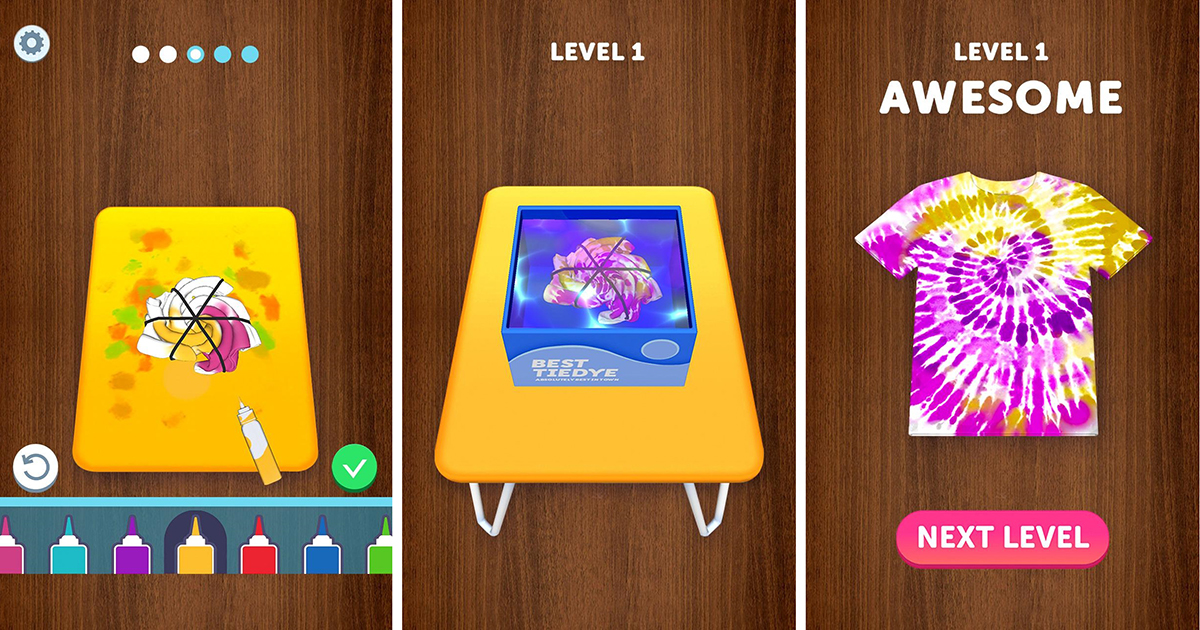Game development usually begins with the creation of a prototype. However, even before this stage, a fair amount of work needs to be done, says Rotem Eldor, product director at CrazyLabs. In an article for the Gamesindustry website.biz he told what the preparation for the creation of a successful hypercausal title should consist of.
Tie DyeStep #1: Start by choosing a subgenre
There are different ways to start working on a prototype of the game.
Some initially have an idea. They are immediately accepted for its implementation.
Another possible way is to first look not for an idea, but for a suitable subgenre. Thus, it will be possible to start development not from scratch, but with a ready-made concept at hand.
According to Eldor, such a move will help structure ideas and pacify the imagination, allow him to work in a clearly defined direction, come up with mechanics that are initially suitable for the product.
Step #2: Pick an idea for a subgenre
Then start looking for a process or mechanics (idea) that is suitable for the selected subgenre (the more ideas you collect, the better).
You can get ideas from anywhere. Some are inspired by things they liked as a child, and some are inspired by TV shows or viral videos. Even a car wash or a TV remote control can prompt future mechanics.
As an example, Eldor cites Tie Dye. This is a hyper-casual game in which users dye clothes using the tai-dai method (tie a thing in a knot, apply paint and wash it).
A similar method of coloring has been known for a long time. However, relatively recently, videos with similar coloring have become a success on social networks. CrazyLabs took advantage of this situation. The company has released a game in which you can dye clothes in this way.
This is what the initial concept of the Tie Dye game looked likeStep #3: Make a list and shorten
A shortlist of the best ideas should be selected from the pool of collected ideas. How to cut off the extra ones? Dump mechanics that seem too niche and confusing. Try to focus on those that will be understandable to the widest possible audience.
After that, the list will become smaller. It’s time to analyze the remaining participants by asking each of them the following three questions:
- what is the point of mechanics?
- how can a game with such mechanics look like?
- how to link the selected subgenre and the game?
The answer to each of them will allow you to sweep away a number of mechanics. As a result, the developer will have a shortlist of concepts that at least deserve attention.
A backlog of ideas is a necessary thing for a developer of hyper-casual games. Everything happens fast in this market. The team can start a new game even before it receives the test results or the publisher partner’s feedback on the previous project.
Step #4: Forming the essence of the game
This step is one of the most important when developing a prototype and requires close attention, Eldor is sure.
To understand the essence of the project, Eldor offers to answer three questions:
- what do you need to do to win? You can’t go anywhere without a victory. It gives a sense of completeness to the process, without which there will be no pleasure from the game.
- what is the condition of defeat? Challenging games work wonders in terms of attracting users. In addition, videos of player failures are very successful.
- what will be the progression? Even at the first stages of development, it is important to decide how the user will feel progress in the game? Thanks to what? Will his own skills grow, or will the game offer content that will reflect the time and effort spent on the game?
It is very important for users to feel that they are moving forward. If there is no progress, then users quickly stop logging into the game. Therefore, already at the prototyping stage, it is necessary to determine what the gamer will eventually wait for in the game.
Step #5: Decide what the controls in the game should be
Before proceeding to the next stage, it is important to decide what kind of management will be. There are many options. Taps, swipes, virtual sticks.
But here it is important to remember: within each of the genres, certain control options have been established. For this reason, it is not worth retreating from them. People don’t really like change.
In the interests of audience retention, it is usually better to use those management schemes that are widely distributed.
Step #6: Create a storyboard for the commercial
The previous steps, Eldor believes, should be enough to take up the creation of an advertising video showing the future gameplay. In fact, it will become a prototype that will show whether the game has market potential.
For the commercial, you need to make a storyboard. It will help structure its content.
When creating a video — and before that its storyboards — you should remember the following:
- viewers should understand how to play in the first 3 seconds of the video (be careful about what you show in the first moments);
- it should be clear from the video what is the condition of victory and what is the condition of defeat;
- advertising cannot do without, let’s call it, a wow moment that provides the player with a surge of endorphins. It can be a demonstration of the result, showing a beautiful scene. In some cases, this is part of the victory, but this does not always happen. For example, in Tie Dye, the wow moment comes when the player sees the colored clothes.
As soon as the storyboard is finished, you can start creating a commercial for various channels.


